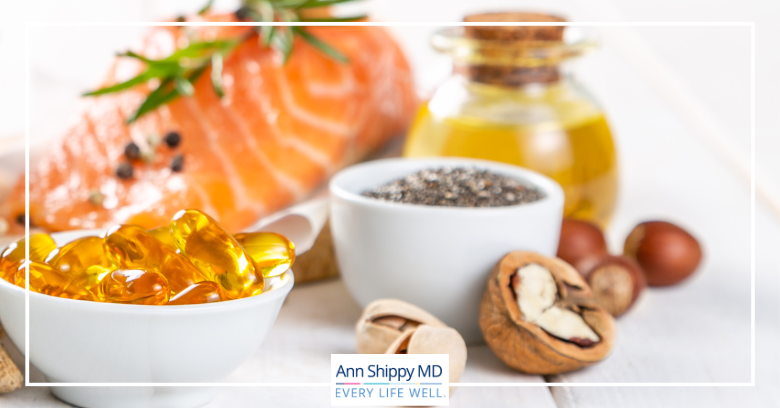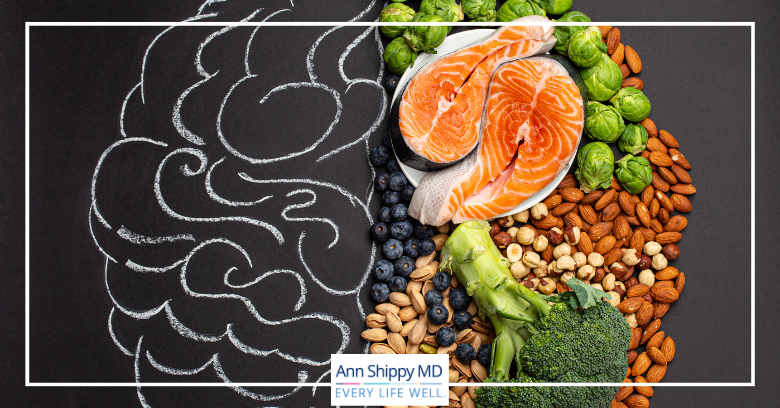The Truth About PUFAs: Do PUFAs Lead to Diabetes or Heart Disease?
Chronic disease continues to be the most important health challenge in the United States.
The numbers of adolescents and adults with metabolic syndrome, pre-diabetes, diabetes and heart disease continues to skyrocket. The underlying factors of these types of metabolic diseases are often driven by increased inflammation, eating a diet with refined foods, exposure to toxins and other common constructs of modern life.
While a Functional Medicine approach is truly the best approach for assessing risk and addressing root causes of each individual, nutrition research continues to spew out broad recommendations, especially when it comes to dietary fats.
But, how do you know what is best for you? Today we are going to dive into a specific category of fats called PUFAs.
Specifically, this article addresses the following:
- What are PUFAs?
- Why are PUFAs controversial among nutrition experts?
- What the science actually says. Hint: It’s very mixed!
- How to make smart nutrition choices that fit into your life.
What Are PUFAs?
PUFA stands for polyunsaturated fatty acids, a type of fat naturally found in food and in the human body. Structurally, PUFAs contain multiple double bonds, making them more fluid. In contrast, monounsaturated fatty acids contain only one double bond making them slightly fluid and saturated fats don’t contain any double bonds making them more rigid.
While fats have many roles in the body, you’ll find both unsaturated and saturated fats in every cell wall of the body, including the cells that make up the brain, heart, thyroid and muscles that we will be discussing today.
A balance between the fluid unsaturated fats and the more rigid saturated fats helps with cell integrity and communication. We don’t want cell membranes that are too fluid and, on the other hand, we don’t want cell membranes that are too rigid either because this affects the function and fragility of the cell.
Both omega-6 fats and omega-3 fats are PUFAs. Omega-6 fats include the essential linoleic acid and the longer chain fat, arachidonic acid. Omega-6 fats are used to make communication messengers, called eicosanoids that can send more inflammatory signals. Poultry, meat, eggs, nuts, seeds and vegetable oils are sources of Omega-6 fats.
Omega-3 fats include the essential fat, alpha-linolenic acid that we must get from the diet, as well as eicosapentaenoic acid (EPA) and docosahexaenoic acid (DHA).
Since the body has a low conversion of alpha-linolenic acid into the DHA and EPA, it is often recommended that we consume these fats in the diet as well. Omega-3 fats are also used in communication and send more anti-inflammatory signals. Fish, other seafood, seeds and fish oils are sources of Omega-3 fats.
The balance between omega-6 and omega-3 fats is important. Too much omega-6 may cause a more inflammatory state in the body. A normal omega-6 to omega-3 ratio is somewhere between 4:1 or 2:1, however, since the rapid increase of industrial foods, including an increase in high omega-6 vegetable oils, this ratio has increased to 16:1 or even higher for many people.
What is the PUFA Controversy?
Just like many other topics in nutrition science, there is a large controversy over fats. We went from the low-fat days of the 1980s and 1990s to today’s nutrition landscape where you’ll find many promoting high fat diets, including ketogenic or carnivore diets. It’s even hard to unlink the fat debates from the debates around carbohydrates.
The low fat craze was born out of the scientific studies that suggested that eating saturated fat increases cholesterol in the blood and leads to heart disease. And, that replacing saturated fats with polyunsaturated fats, will lessen the risk.
Unfortunately, this assertion is built upon faulty science and the assumption that PUFAs are superior to saturated fat continues to be held as truth in much of the research and in nutrition recommendations of today.
In Functional Medicine, we look at the whole person including genetics, epigenetics, inflammation, toxin exposures and take into account the many factors that may lead to cardiovascular or metabolic disease, not just fats in the diet.
The Paleo movement has reclaimed saturated fats and worked to move away from the highly processed vegetable oils that have been touted as superior to the fats from real animal foods – like eggs and grass-fed beef – for so long.
It’s no secret that the health of humans declines as the diet moves away from traditional, ancestral foods and towards processed, Western fake foods. Processed foods include both processed carbohydrates and industrial fats.
Now, some circles have moved even further toward the use of saturated fats and made the recommendations to avoid as many PUFAs as possible. You may see nutrition recommendations that suggest avoiding the high omega-6 vegetable oils such as corn, soy and safflower oils, but also fish oils, fish, nuts, seeds and other PUFA sources in the diet.
Proponents claim that wildly reducing PUFAs will improve diabetes and blood sugar balance, risk for heart disease and even boost thyroid health, leading to improved metabolic health. But, is this true, or even necessary?
What Does The Science Say About PUFAs?
In short, the science isn’t clear or definitive and it’s hard to differentiate PUFAs from processed oils versus PUFAs from whole food in the literature. Let’s take a look at some of the recent review articles looking at diabetes and heart disease. Remember that having diabetes is the largest risk factor for heart disease.
A 2019 study reviewed 31 randomized controlled trials looking at the issue of dietary PUFAs. These studies either compared diets with different amounts of PUFAs (from various sources) or looked at replacing saturated fats with PUFAs, specifically looking at markers for diabetes including blood sugar, insulin and hemoglobin A1C.
The review included studies that looked at fish, fish oils, vegetable oils or nuts and about half of the studies showed an effect, typically an improvement in glycemic control, the other half of the studies found no effect. Ultimately, the review said the relationship between PUFAs and diabetes is inconclusive and requested more studies on the topic.
One problem with studies like this is with having a quality control group and taking into account all of the other variables that are in play with both the diet and the development of a chronic condition.
With regard to heart disease, fish and fish oil (omega-3s) are typically touted as protective for cardiovascular health, but the data here is mixed as well. Observational studies typically show that increased fish consumption or higher omega-3 levels in the blood reduce the risk of cardiovascular events.
However, there are also studies, typically of those who already have heart disease, that show little or no benefit to omega-3 intake. If we take a larger view, we know that omega-3 fats are anti-inflammatory and helpful for dementia, depression and other conditions.
When it comes to omega-6s, replacing saturated fats with PUFAs is still the dominating nutrition advice, but do canola oil and margarine really fare better than eggs? This advice continues to increasingly come into question as well.
And, what about nuts? Since nuts contain PUFAs, should they be avoided too? Studies on nuts (and many whole foods in general) are really lacking because of funding. There isn’t funding for whole foods like there is for more marketable food items such as oils.
One controlled trial compared a diet without nuts to eating 50 grams of pistachios per day and showed that the pistachio group had reduced insulin and A1C.
So as you can see, some of the science on PUFAs is rather contradictory, convoluted and lacking when it comes to whole foods. Rather than continue down this rabbit whole, let’s take a wider perspective and talk about PUFAs in your daily diet.
Top Tips For PUFAs
Although there is no end in sight to nutrition headlines advocating to eat this food or not eat this one, it’s always good to question the research, use common sense and ultimately trust what works for your unique physiology.
When it comes to PUFAs, here are some things to consider:
1. Take a whole food philosophy. Whole foods are always better than the sum of their parts. When we eat the whole food, grown or raised as naturally as possible, we get all of the nutrient benefits, even ones that science hasn’t yet learned. By choosing whole foods, you’ll get PUFAs in natural amounts, the way nature intended, while avoiding industrial oils.
So, there is often no need to throw the baby out with the bath water, or in this case stop eating nuts, fish or fish oil because they contain PUFAs. They are certainly not in the same category as GMO corn or soy oil.
2. Put it in context. Instead of harping on one extreme detail of the diet, consider the context of the entire diet and lifestyle. Diets highest in PUFAs are also high in processed food, refined carbohydrates, sugar and tend to be low in produce, fiber and diversity. Consider other health behaviors such as stress management, movement, sleep and exposure to toxins.
Oftentimes we get caught up in a single recommendation or headline that we hear, when there is some foundational work to be done with the overall diet and lifestyle that will certainly yield greater benefits.
3. Use personalized medicine. It’s impossible to recommend one diet strategy for every person or answer the question about fat balance for each individual. There might be reasons to shift saturated vs. unsaturated fat or omega-6 vs. omega-3 intake for certain individuals as a therapeutic diet approach.
Functional Medicine nutrient testing is helpful to measure your own fat distribution and omega-6 to 3 ratios as a starting place. If there are high-PUFA foods, such as nuts or fish, that you don’t tolerate because of an allergy or sensitivity, for example, avoid them.
4. Be very careful about rancidity. One reason that certain PUFAs may impact our health negatively is because they go rancid. This is especially true of high PUFA oils. While most of the industrial oils (corn, soy, canola, sunflower, etc.) have most certainly gone rancid because of high heat processing and loss of antioxidants, it can be hard to tell because they smell neutral. Ultimately, these highly processed oils are best to avoid.
Other oils, such as the omega-3 fish or flax oil, are very sensitive to light and heat. If they smell bad, don’t consume them and be sure to store them in the fridge to preserve freshness and the integrity of the fats. Choosing a pure source to begin with is equally as important.
While we can’t definitively answer the question if PUFAs are “good” or “bad” for metabolic health, they exist in nature in whole foods that may be very helpful additions to the diets of many, especially those at risk for diabetes and heart disease.
It’s easy to get lost in the research and become frustrated because of all of the conflicting evidence, but in the context of our lives, eating real food and trusting our inner wisdom always wins.
References














